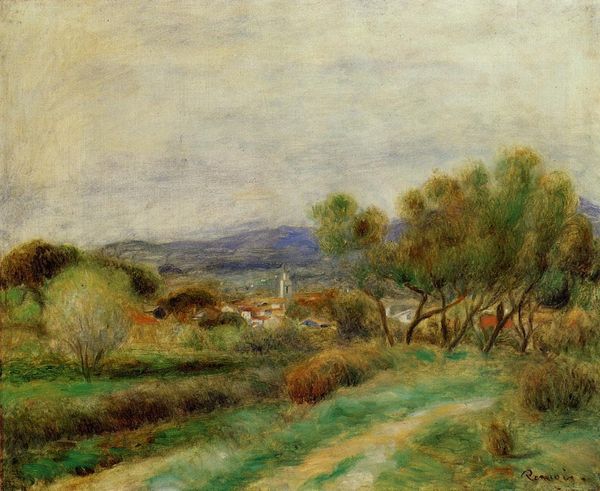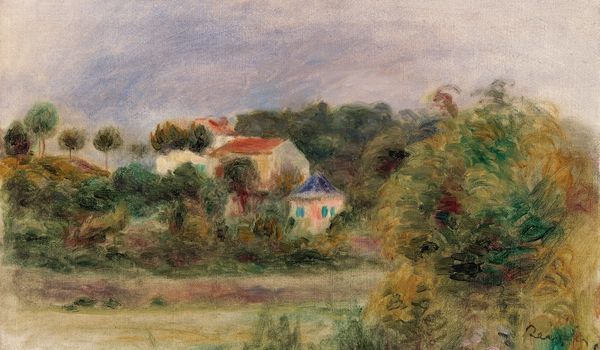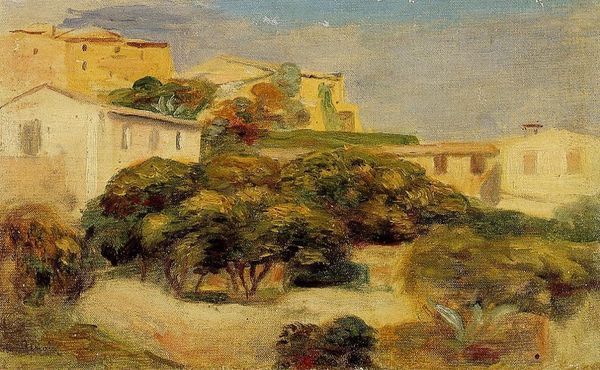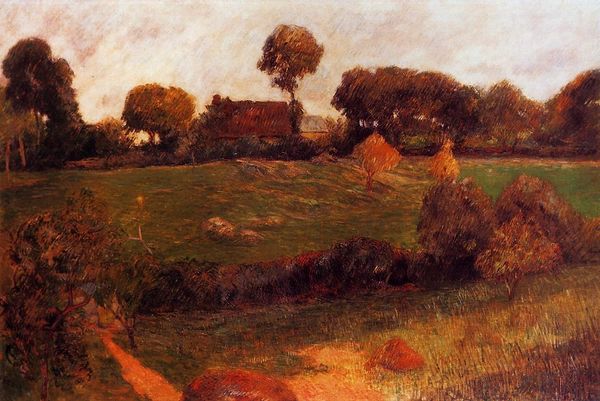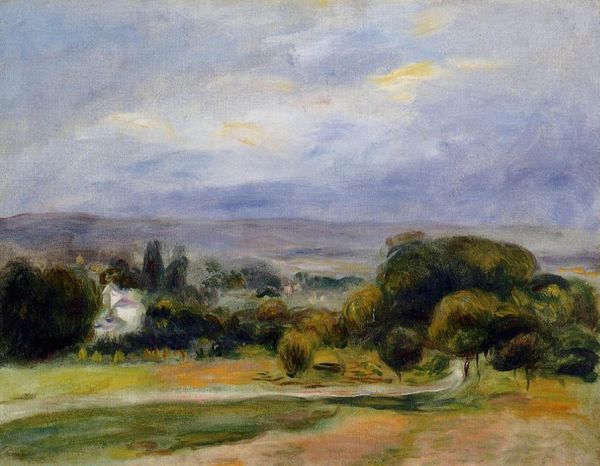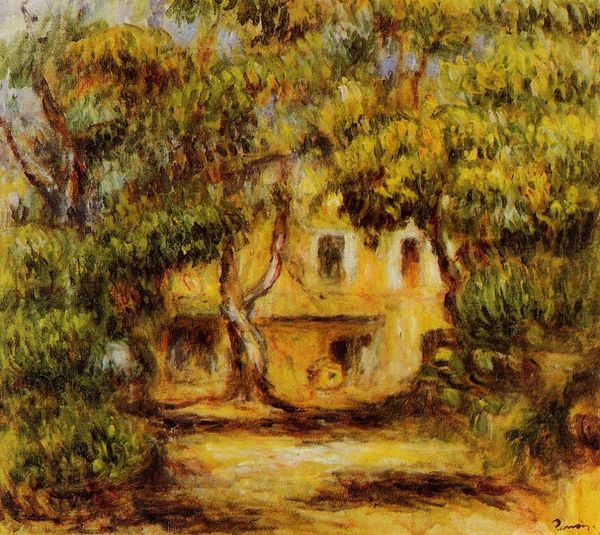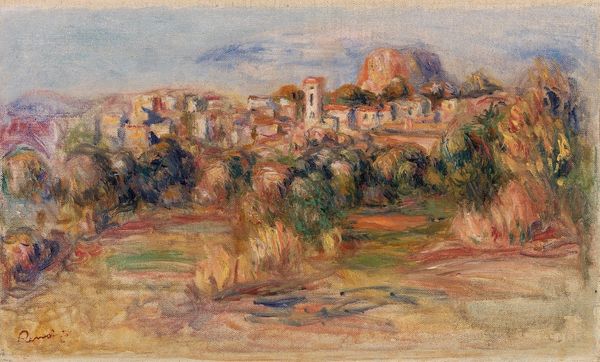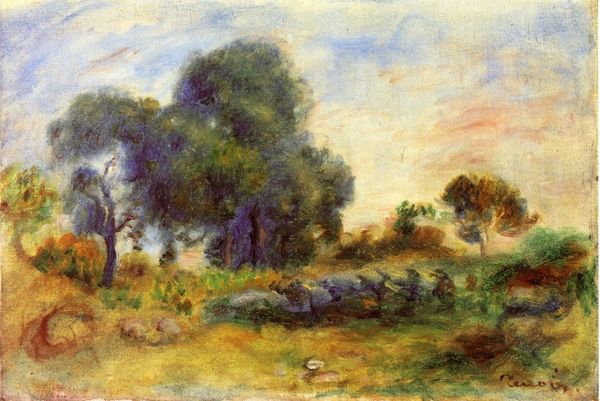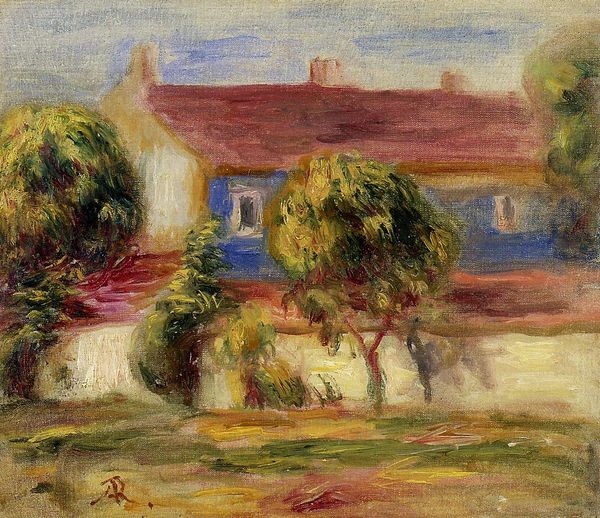
Copyright: Public domain
Editor: So this is Renoir's "Young Woman Standing near a Farmhouse in Milly," painted in 1892. It’s an oil painting, and the brushstrokes seem really loose and expressive. What strikes me is how the farmhouse almost blends into the landscape, a product of applying paint in such a textural way. What's your take? Curator: It's interesting to consider Renoir's move toward rural scenes like this one. How does this painting, as an object of consumption, relate to the industrializing world of the late 19th century? This "blending," as you say, seems less about organic unity and more about a strategic move by the artist. We see impasto layering capturing the essence of labor within it. He romanticizes agricultural production, yet the artwork itself is a commodity within a rapidly changing marketplace. What kind of commentary is it making about society, consumption, and our ideas about 'the country' at that time? Editor: So you're saying the painting isn’t just about a pretty landscape but also about how that landscape is being consumed? The textures and materials used reflect the value we place on 'nature'? Curator: Precisely. Note how Renoir chooses oil paint to represent an older time. Is that selection arbitrary, or is he making a very conscious choice to contrast modernity? Oil paint was factory-produced at this point in history – do those textures somehow hide those origins? Does Renoir use texture and loose brushstrokes to blur or disguise the capitalist system supporting him? Editor: That’s really interesting, I hadn't thought about it that way. Now I'm looking at those thick daubs of paint as representing a type of idealized manual labor in a rapidly mechanized world, a world which also supports the raw materials available to the artist, too. Curator: Exactly! Thinking about art through the lens of production and consumption opens up a whole new layer of understanding. Seeing how societal systems intertwine and are captured via brushstrokes in what appears to be a mere landscape allows one to reconsider history.
Comments
No comments
Be the first to comment and join the conversation on the ultimate creative platform.

